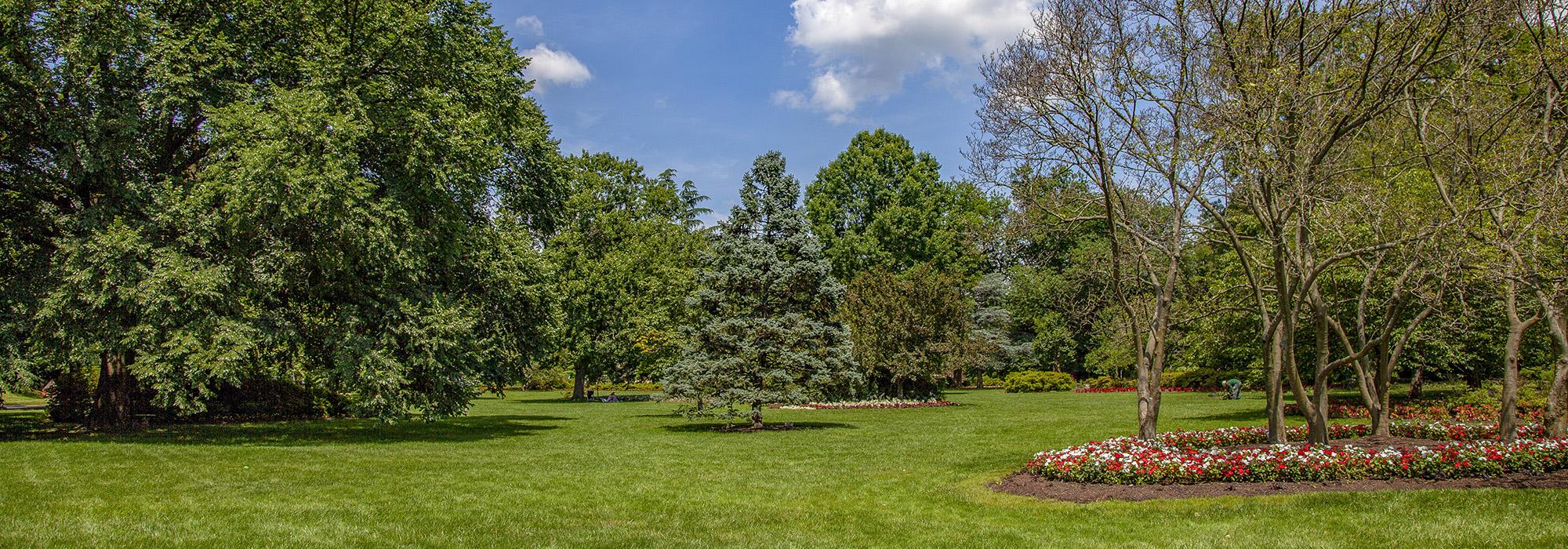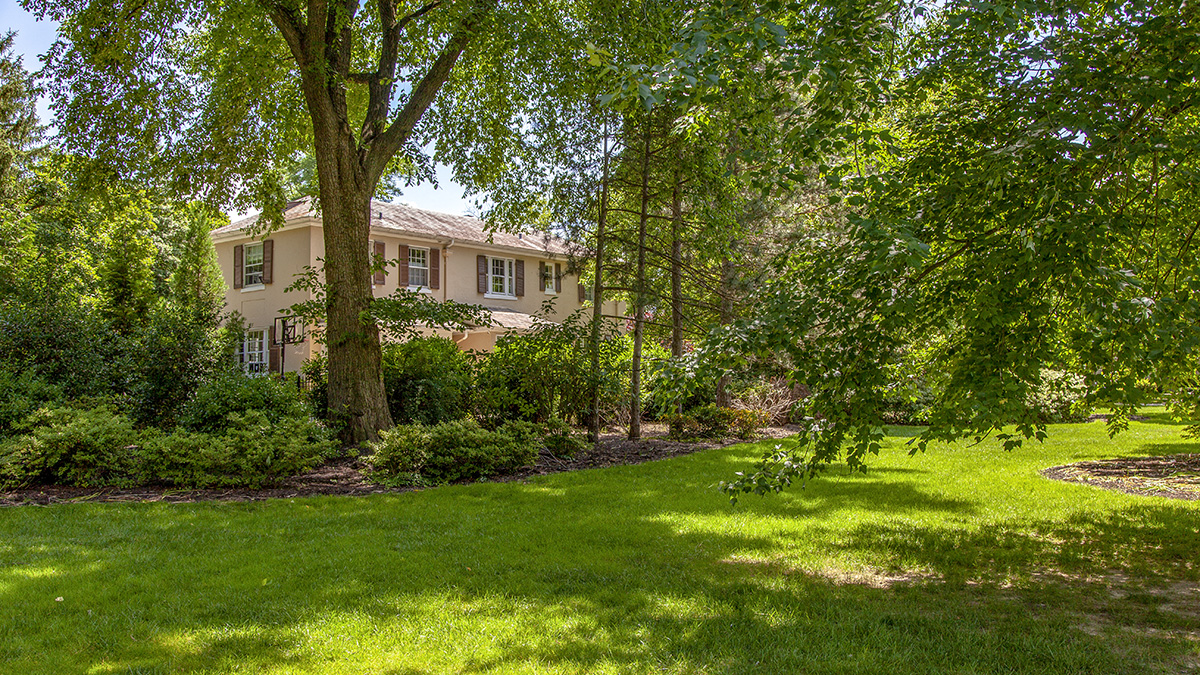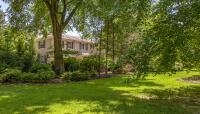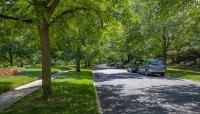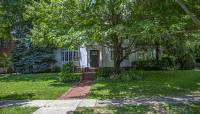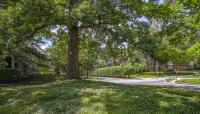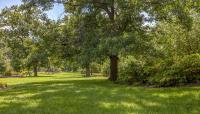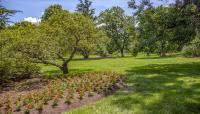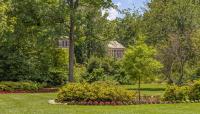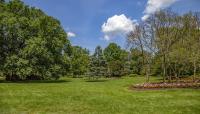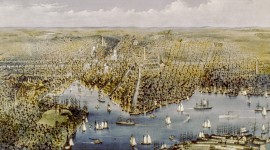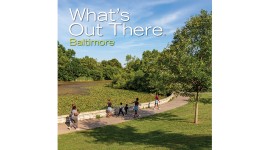Landscape Information
In 1911 the Roland Park Company purchased land once belonging to the Guilford estate to develop this suburban neighborhood just north of what was then the Baltimore city line. The 210-acre site contained rolling hills on its western portion and sections of oak forest throughout. Frederick Law Olmsted, Jr., of the Olmsted Brothers firm, directed the planning and design of the residential community, with the first lots sold in 1913. Development was substantially complete by 1950. Four primary roadways take curving paths from north to south, crossed by many narrower, secondary roads, thus discouraging through-traffic and leaving ample space for sidewalks, expanses of lawn, and generous setbacks. Faced with extant development across York Road, the eastern edge of the plan included multiple residences combined within large buildings that were clustered to form “places.” Three public parks were built within the community: Little Park (now Guilford Gateway Park) along St. Paul Street; Stratford Green (now Sherwood Gardens) near the neighborhood center; and Sunken Park, which included an outdoor performance space with a raised ground surface for a stage and evergreens to serve as theater wings. As an additional amenity, semi-private parks occupied the interiors of several blocks, intended for use by the residents in adjoining lots. In addition to the carefully devised site plan, Guilford included progressive amenities and infrastructure, such as underground conduits for telephone and electric cables, street lights, and separate stormwater and sanitary sewers. The Guilford Historic District was listed in the National Register of Historic Places in 2001 and is home to more than 4,500 residents.



